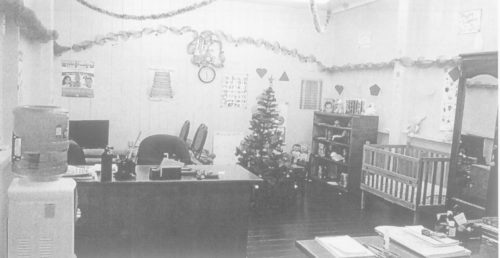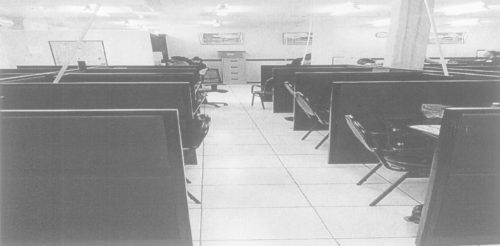The Family Court celebrated its first anniversary on Tuesday, holding as its mission, to provide the required support services to the judiciary in dealing with disputes. This is according to the 2016 Family Court Yearly Report.
According to the report, there were 520 family matters referred to the court during the year. In 176 of these cases, Interim/Nisi orders were granted, 18 were withdrawn, eight struck out and 81 concluded. Left pending were 237 cases.
Before the commissioning of its spanking new building last year, family court hearings were conducted in the Chambers of the various judges hearing such matters.

Today, however, the court has its own space, occupying the eastern block in the compound of the Georgetown Supreme Court of Judicature.
But more importantly, the court has assigned to it, its own judges, as well as a registry and staff which caters to its clerical and administrative needs.
In an interview yesterday with the Stabroek News, Acting Chief Justice Roxane George, explained that as a “special court,” the Family Court is able to dispense with family matters and not have to be burdened by matters outside this branch of law.
This, the Chief Justice said, directly addresses case backlog issues as the Family Court judges can now focus on this category of matters, as opposed to having been periodically rotated to deal with matters across all branches of law.

Though two judges ordinarily sit in the Family Court, the CJ pointed out that currently, Justice Sandra Kurtzious is the only sitting judge hearing family matters.
Just recently, Justice Dawn Gregory, the other Family Court judge, was appointed to the Court of Appeal. The Chief Justice explained that as a result, appointments will soon be made to fill the void.
Asked what the Family Court can point to in terms of achievements after one year of existence, Justice Kurtzious, to whom this newspaper also spoke, said that its introduction has changed the landscape in addressing the needs of the family, to the extent that family court judges can now deal directly with family matters.
With specific reference to matters being heard in Georgetown, the judge noted that under the new dispensation, litigants remain before the one particular judge hearing their matter, from beginning to end.
She explained that the matter remains with that judge who has already become familiar with the case, and continues to hear it to the end.
The court also boasts what is called a Directions Hearing Room which is more of an informal conference sitting, as opposed to the adversarial layout of the courtroom in which trials are conducted.
Justice Kurtzious explained that as a preliminary step to hearing petitions such as divorce, the court seeks to foster dialogue in the directions hearing room, with the aim of promoting communication between husband and wife.
She said that it is here that feelings are vented between the parties, in the presence of judge and counsel for both sides. She noted that there have been instances where, after these discussions, parties were able to reconcile their differences, and maybe opted to not even pursue litigation.
She said that sometimes, all that may be required, is communication between the parties, and in so facilitating this, the court would be happy to mend relationships before the parties leave, especially geared towards “what is in the best interest of the child,” if children are involved.
She said that where such a need may arise, the directions hearing room also facilitates interactions between the court and children alone, as well as relations with parents and children.
These observations, the judge said, can then better equip the court in making particular determinations in a case. She said that a special court such as the family court provides guidance for the parties.
The directions hearing room into which this newspaper was invited, creates a more relaxed environment, as opposed to the courtroom and it is this atmosphere the judge said, that allows for a certain level of comfort between the parties, to say how they feel.
The judge in the same vein, however, cautioned that where this is not the end result, after a period of discussion, courtroom trial proceedings would commence.
Justice Kurtzious also pointed out that there have been some cases where the court was able to refer parties to court annexed mediation, a section of the Family Court, where alternative means of dispute resolution can be explored, apart from the courtroom.
The Family Court also has an onsite probation officer, who, on the court’s request, provides immediate observation of relations between children and parents, where the need so arises.
The officer assigned to the court, who is also a Child Care and Protection Officer, would thereafter prepare reports after conducting follow-up interviews to update the court on the particular case.
The Family Court also caters for potential litigants who may not have an attorney, and who have not yet initiated legal proceedings, to walk into its registry to seek guidance from its customer service representatives, as to the way forward in beginning proceedings.
The judge said that these persons, who are referred to as walk-in applicants, can then seek the assistance of the Legal Aid Clinic, to whom the Registry staff would direct them.
The Family Court block is also outfitted with a Child Care Room where litigants can leave their minor children, while their matters are being heard. During this time, the children are cared for by childcare workers who are staff members of the court.
The room also caters for supervised visits between children and parents where the court so orders in custody hearings. There, the childcare workers and probation officers, will observe interactions between children and parents, and ensure that visitation timelines are adhered to.
The room is however not limited to the children of litigants before the Family Court, but all litigants before the Supreme Court in general, who, when they have to attend court, would otherwise have no one to supervise their children.
The room caters for all minor children, from infancy to 17-years of age, and operates from Monday to Friday, between the hours of 8am and 4.30pm.
Visitations are so organized, that only one set of parents/guardians and their child/children would occupy the space at any given time.
Meals for the children utilising the room are provided for by the Child Care and Protection Agency, which falls under the ambit of the Ministry of Social Protection.
To boost its service delivery, the courts are equipped with skype technology which it says has contributed to reducing delays.
Justice Kurtzious said that while there may be occasional challenges facing the Family Court, it is progressing. She said that its resounding success also depends largely on the adherence of legal practitioners to case management rules, and their compliance with strict timelines set by the court.
In its 2016 Yearly Report, the Family Court said that its efforts are to facilitate the maintenance of public trust and confidence.
According to the report, for the period June to December of last year, the court had an intake of six custody with maintenance matters, one custody with division of property case and eight custody with access matters.
For the same period, 14 division of property matters were brought before it, eight for injunction with division of property, and one for maintenance of division of property case.
As regards divorce statistics for the said period, 18 divorce with custody matters were laid before the court, three divorce with maintenance, four divorce with access, two divorce with division of property, two divorce with custody and division with property matters and 14 divorce with maintenance and division of property cases.





